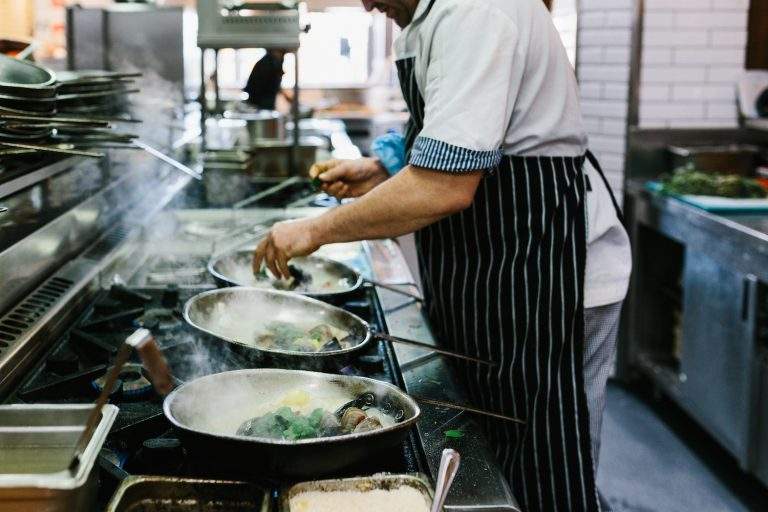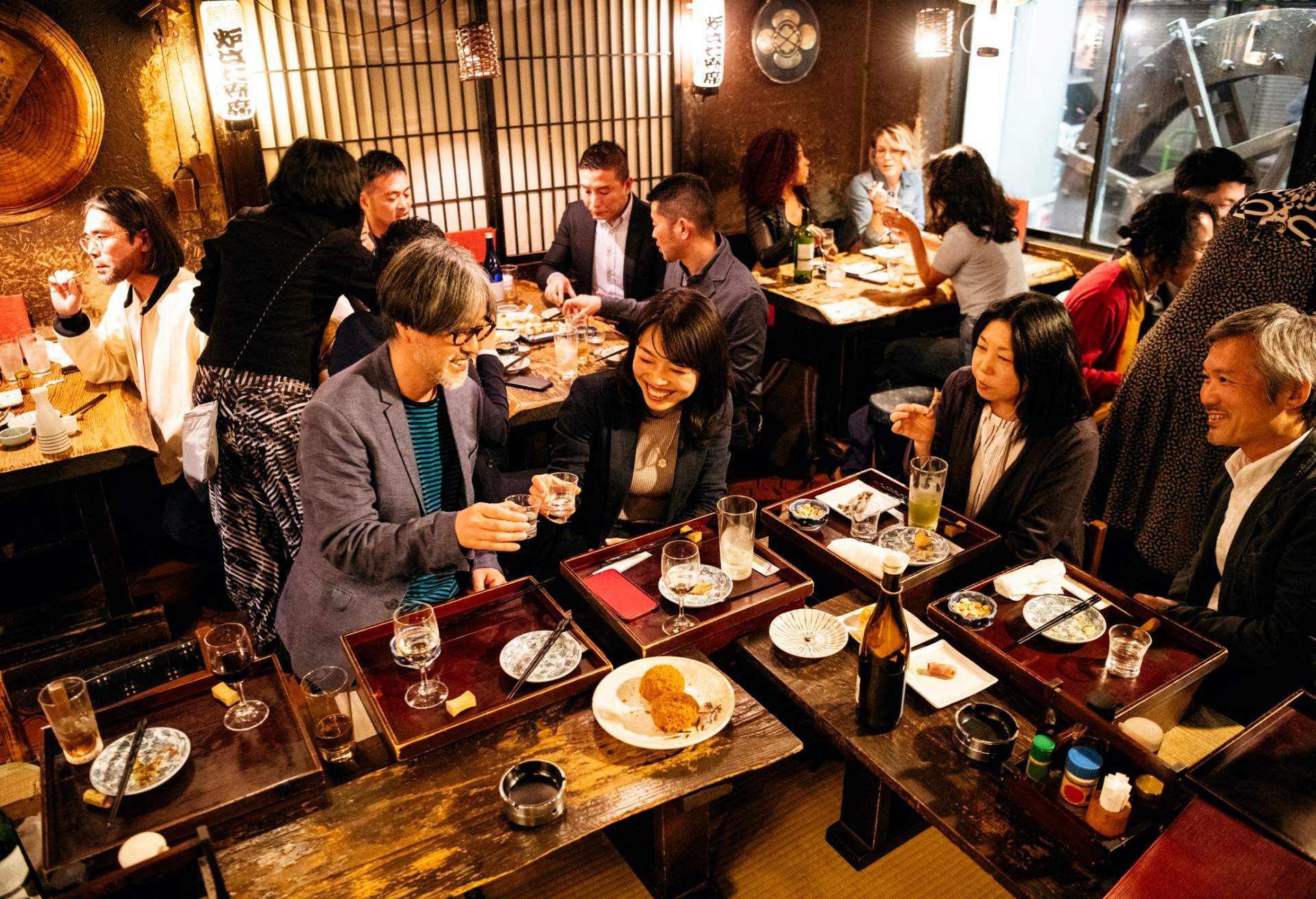A restaurant menu is key to bringing guests in and keeping them around. Often, it’s the first impression guests will have—and a quick one at that. On average, guests will spend only 109 seconds reading your menu, according to a Gallup poll.
Creating a new menu or improving an existing one takes time. You’ll want to consider the items, design, and continued promotion. A good menu stays true to a restaurants’ concept and maximizes profit.
Quick links
Selecting menu items
Choosing the menu size
Organizing the menu
Additional menus
Pricing a menu
Picking a medium: print or digital
Create a menu design
Writing menu copy
Marketing a menu
Updating a menu
Creating the menu
Not every restaurant will build a menu the same way. Some will include every contributor’s name, while others will only feature exclusive items. The key is to figure out what option works best for your restaurant.
How do you select the menu items?
Your menu, above all, should represent your restaurant. If your restaurant focuses on sustainability, it should show in each dish.
This is also the perfect opportunity to dial in on what menu items the restaurant wants to be known for. Focus on two entrees you want guests to remember. Then, construct two appetizers or pairings that can complement the main dishes. Use this system to pair off dishes until the menu feels complete.
How do you choose the menu size?
While you may want to include a thousand different dishes, less is often more. Choice overload, or the inability to make a decision due to too many choices, can hurt the guest experience. It takes only 15 menu items to catch 59% of guests’ interest, according to OpenTable’s recent diner survey. That’s a lot fewer than the average chain restaurant’s 132 items. Instead of including every idea, limit your menu to no more than 10 items per category.
You may consider an extensive menu to appeal to pickier eaters and those with allergy or dietary restrictions. Yet, this route requires a larger kitchen and more inventory, and may result in a higher risk of food waste. A smaller menu reduces those obstacles but may not appeal to as wide of an audience.
How do you organize a menu?
Start by writing out the dishes you want to include on the restaurant menu. You can brainstorm on a piece of paper, or digitally in Google Sheets or Excel.
Once you’ve settled what to include on the menu, place each item into a category. Typical categories include appetizers, entrees, and desserts. If there are many styles of one dish—soups, for example—consider featuring a separate category for soups instead lumping them in with appetizers. This method works best if there are many similar dishes, such as four different styles of soups.
Next, think back on your star dishes that are most loved or profitable. Highlight these for later when you design the menu. Calling attention to these dishes on the menu can help boost their popularity.
Additional menus
Remember, you don’t have to include every idea on the main menu. Specials, set menus, and additions such as desserts, drinks, or dietary restrictions can help reduce choice overload, help with dietary restrictions, and save servers time on ingredient questions. If you’re considering a seasonal menu, develop a menu template that can be modified.
How do you price out menu options?
To price your menu, start by analyzing your food cost percentage. This is the best way to determine how much your restaurant will make on a given dish. A good standard to follow is to have each menu item fall between 28% and 35%. This includes beverages.
If your goal is to brand your restaurant at a lower price point, look into the industry standard. Price items competitively and make sure they’ll boost your profitability.
Designing the menu
Catching a guest’s eye starts with good, cohesive design. Whether you’re looking to hire a designer or want a budget friendly alternative, there are plenty of options to get you started.
Should the menu be print, digital, or both?
Picking a medium and sticking to it can save money in the long run. But there are pros and cons to each option. Many guests prefer a physical, printed menu, but it costs more. Don’t forget to add in budget for lamination, sleeves, and reprints. If you’re planning to frequently change items, printing special add-on menus when needed—instead of updating the main menu—can help reduce costs.
Digital menus, while less tactile, are easy to update. They also reduce the spread of germs and are a great choice for restaurants offering seasonal dishes or rotating beverages. You can use a QR code to connect guests to every menu and drive traffic to your website for future reservations.
Whether you opt for a physical or digital menu in-house, you’ll want to create a digital menu for your website. This is often where guests will first decide to dine with you so a digital copy is key.
How to create a menu design
A well-designed menu should be eye-catching and easy to digest. Picking a color scheme is a great place to start with any design. It can be as simple as picking one or two colors from your logo that reflect the restaurant brand. Or, try looking into color theory for some inspiration. This can also help you understand the influence color has on guests. If you’re opting for physical menus, sticking with black and white can minimize printing costs. But if color is a large part of your brand, the added price may be worth it.
When starting to map out the design, remember the “golden triangle.” This means that a reader typically starts in the middle of the page, then moves from the top right to the top left. The upper right-hand corner is the “sweet spot” and a perfect place to highlight the restaurant’s most profitable dish.
Even the smallest design choices can make a big difference. A study from Cornell found that menus without dollar signs ($) prompted diners to spend more. Consider eliminating dollar signs and avoid listing menu prices in a single column. Add in some “eye magnets” for an attention-grabbing bonus. This can be as simple as a graphic illustration or a shaded border around a menu item.
If design is not your forte, consider having your menu designed by a professional or use a free online menu maker. There are plenty of templates available online that can aid in this process. Whether you’re a seasoned pro or need help getting started, there are plenty of great options online:
- Canva: Bring your descriptions and their templates will help you do the rest. Canva hosts a library of thousands of free templates to choose from.
- Adobe Express: While it might take a bit of time to get used to the Adobe Creative Suite, this software can help you create a custom, professional menu with ease.
- VistaCreate: The plug-and-play menu templates are easy to use, and the platform has the option for print and delivery.
How to write menu copy
Like your menu items, less is more. Concise menu copy should show exactly what guests will get on their plate. This will help reduce clarifying questions to servers, resulting in faster orders and fewer dishes sent back to the kitchen.
Use your list of ideal dishes to create descriptions. Talk to your chef or look back at the inspiration for the dishes. This can help you elaborate on any special ingredients you should feature. Keep the copy as simple and easy to read as possible. Remember, guests only spend a limited amount of time reading your menu so be sure to keep your copy minimal.
If you’re having a hard time narrowing down the words on the page, consider hiring a copywriter. Websites like Fiverr or Upwork can connect you to freelance copywriters that specialize in menu writing. If you opt for hiring a freelancer, these sites also host designers as well.
Your copy should work in tandem with your design. As you flush out your fonts, spacing, and composition, reword descriptions to create a better flow. The menu descriptions should be no more than two lines. Fonts and spacing should allow the menu to fit on one page, so be sure to adjust those if necessary.
Once your menu design is set, bring in any other co-owners or marketing folks to proofread and review. They’ll be able to provide feedback on how the menu lines up with the restaurant’s branding.
Marketing the menu
The menu is your most powerful selling point and you should market it as such. Getting it in front of guests can determine whether someone decides to dine with you.
How should you market a menu?
Around 77% of guests will visit a restaurant’s website before making the decision to dine. Upload your designed menu to your website, OpenTable profile, and Google Business profile.
Bring the dishes to life by adding digital photos to your website and any relevant profiles. Consider including photos in email announcements as well.
Running social campaigns can bring in new guests and boost interest in menu items that might be struggling. Social media promotion is a great way to also build awareness for any special menus you might be running. Remember, your menu is a main reason guests decide to dine with you.
When should you update a menu?
This depends on how often a restaurant will be updating its menu items. A good rule of thumb is to revisit the menu every 6-12 months to analyze how each item is performing. Take the time to bucket each item into the following categories:
- High profitability, high popularity: These are the keepers. Consider moving one of these items into the menu’s “sweet spot” for extra promotion.
- High profitability, low popularity: These are the dishes that could use some extra help. Consider running a special or social promotion to boost interest.
- Low profitability, high popularity: While these items bring guests in, they can also hurt your bottom line. Think about reducing the serving size or increasing the price to improve its profitability.
- Low profitability, low popularity: It’s always hard to say goodbye, but you should remove any dishes in this category. Instead, use this space to introduce fresh, new ideas.
As time goes on, you’ll begin to notice trends in what guests order. Don’t be afraid to change the menu based on those observations. Be sure to listen to guest feedback, analyze the numbers, and tap into your intuition to ensure restaurant success.




